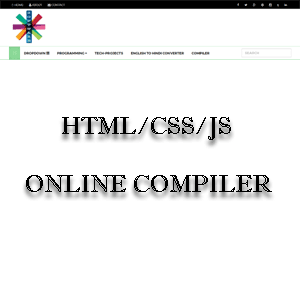How To Use Predicate In Java 8
In Java 8,
The Predicate is a functional interface that represents a single argument function that returns a boolean value. It is widely used in functional programming, especially when working with streams, as it allows you to define conditions that can be tested.
The Predicate Interface: Let’s look at an example of how to use the @FunctionalInterface annotation in a Spring Boot application:
The Predicate interface contains a method called test(T t) that evaluates a condition and returns a boolean. It also contains some useful default methods like:
The Predicate is a functional interface that represents a single argument function that returns a boolean value. It is widely used in functional programming, especially when working with streams, as it allows you to define conditions that can be tested.
The Predicate Interface: Let’s look at an example of how to use the @FunctionalInterface annotation in a Spring Boot application:
The Predicate interface contains a method called test(T t) that evaluates a condition and returns a boolean. It also contains some useful default methods like:
- and(Predicate other): Combines two predicates with a logical AND.
- or(Predicate other): Combines two predicates with a logical OR.
- negate(): Negates the result of the predicate.
Example 1: Simple Predicate
In the following example, a Predicate is used to test whether a number is greater than 10
Example 2: Combining Predicates with and(), or(), and negate() You can combine multiple predicates to create more complex conditions using and(), or(), and negate().
Example 3: Using Predicate with Collections and Streams The Predicate interface is often used with the Streams API to filter collections based on certain conditions.
Example 4: Predicate with isEqual Static Method Java 8 introduces a static method isEqual in the Predicate interface, which is used to create a predicate that checks if two objects are equal.
Example 5: Using Predicate with a List of Objects You can use predicates to filter lists of custom objects. Hare's an example where we filter a list of Person objects based on age.
Summary of Predicate Methods:
Example 2: Combining Predicates with and(), or(), and negate() You can combine multiple predicates to create more complex conditions using and(), or(), and negate().
Example 3: Using Predicate with Collections and Streams The Predicate interface is often used with the Streams API to filter collections based on certain conditions.
Example 4: Predicate with isEqual Static Method Java 8 introduces a static method isEqual in the Predicate interface, which is used to create a predicate that checks if two objects are equal.
Example 5: Using Predicate with a List of Objects You can use predicates to filter lists of custom objects. Hare's an example where we filter a list of Person objects based on age.
Summary of Predicate Methods:
test(T t): Evaluates the predicate on the given argument and returns true or false.
and(Predicate other): Combines this predicate with another one using logical AND.
or(Predicate other): Combines this predicate with another one using logical OR.
negate(): Reverses the result of the predicate (logical NOT).
isEqual(Object targetRef): Creates a predicate that checks if an object is equal to the given target.
* Common Use Cases:
Filtering collections with Stream.filter().
Validating input, such as checking if a string matches a pattern or if a number falls within a range.
Using complex conditional logic in combination with other predicates.
Predicates are a powerful tool in functional programming and are heavily used in Java 8's Streams API to make code more readable and expressive.
Predicates are a powerful tool in functional programming and are heavily used in Java 8's Streams API to make code more readable and expressive.
Subscribe to:
Post Comments
(
Atom
)





Predicate is very important and helpful for our Development
ReplyDelete